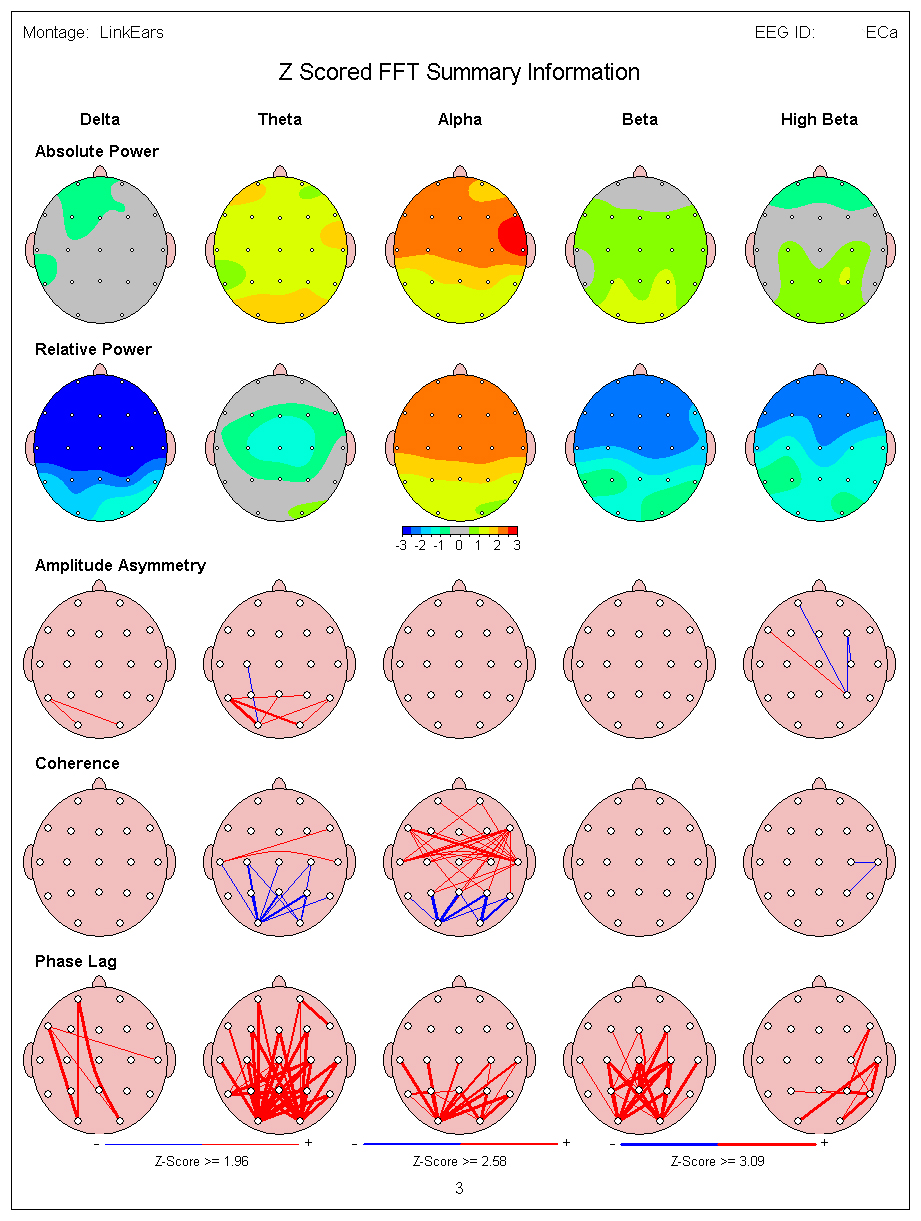What is QEEG brain mapping?
Quantitative Electroencephaloghraphy (QEEG or Quantitative EEG), often referred to as QEEG brain mapping, is an assessment tool used to measure your electrical activity (brainwaves) in the cerebral cortex (brain). Your brainwaves are accessed through digital technology know as a Brain Computer Interface (BCI) and analyzed through a normative database.
The QEEG brain map is then used to aid in diagnosing mental health conditions by providing a means of statistical evaluation of the electrical activity in the cortex.
[message]Research has found the QEEG brain mapping to have reliability that is equal or superior to routinely used clinical tests such as mammograms, cervical screenings, blood tests, MRI, and CAT scans.[/message]
What is Electroencephalography (EEG)?
Electroencephalography (EEG) is the recording of the electrical currents (brainwaves) which are produced within the brain. These brainwaves can be measured on the scalp by the use of electrodes. Brainwaves occur at various frequencies.
What are the different frequencies and bands of EEG brainwaves?
As mentioned before, brainwaves are produced at different frequencies, some fast and some slow. These different frequencies have been traditionally classed into 4 bands; delta, theta, alpha, and beta. Go to our EEG Brainwaves page for more information about the different bands.
How do we record the EEG?
The first step in performing a QEEG brain map which is painless and non-invasive is that we place a cap with 19 electrodes on the scalp. The electrodes on the cap pick up the brain electricity (EEG). You will be asked to sit still for a certain period of time, first with eyes open, then with eyes closed so that we can record the EEG. To view information outlining the steps on how best to prepare for a brain map, click on the link below;
How to Prepare for Your QEEG Brain Map Session
What do we do with the EEG?
After we obtain your EEG which was recorded on the computer, we have to remove artifacts such as muscle tension, eye movement, eye blinks etc. After we artifact the data, we then process it through 6 normative databases, including the New York University Medical School Normative Database. This processing produces a brain map. An example page from a brain map is shown below;
Note that this is just one page from one page from one database. We have well over 150 pages of data by the time we have processed your EEG through all the databases. We pride ourselves on our thoroughness and believe this is the secret to our remarkable success rate.
What do we do with the brainmap created from the EEG?
The statistical data (brainmaps) produced by the databases will demonstrate which abnormalities are present and the degree of severity. We then correlate these abnormalities with your presenting symptoms, testing, and rating scales so we can select the areas of your brain to train. Our near twenty years of experience in neurofeedback, plus the substantial amount of research enables us to be very precise in our targeting of the areas that are causing you problems.
Below is a list of other services offered at the Scottsdale Neurofeedback Institute, click on any of them for more details.
- Biofeedback
- EEG Neurofeedback Training
- 19 Channel Neurofeedback Training
- Cognitive Enhancement Training
- Counselling
- Testing
